In the boat, a group of passengers are singing songs in Icelandic. They go to Grunnavik. On the Great Peninsula west of Dangajökull, the Great Western Fjord Glacier, just below Hornstrandir. It has been ten years, every first week of September that the group goes together. They are childhood friends. They meet to spend four days in one of the small houses placed at the edge of the water at the edge of the cliffs. Four days to relax in the countryside before winter finally settles. I too chose to spend these four days in the middle of nature. But on the Hornstrandir peninsula. The nature reserve at the very top of Iceland. One of the most northerly places. A place full of vegetation, fog and polar foxes. An ancient basalt plateau with the oldest rocks in Iceland. I left Isafjördur where I have just arrived to board a small boat. It drops me off at Veidileysufjördur, one of the small fjords of the peninsula. Four guides of the Borea Aventures company land at the same time. They run at full speed on the trail. They go to the same place as me, the small bay of Hofn, further north, to dismantle a small temporary summer shelter for organized hikes. Summer is over and Iceland is closing down.
I go up quietly in the small valley walking in the middle of the vegetation. Heather, blueberries, herbs, dwarf birches, lichens, mosses. A profusion that contrasts with the rest of Iceland. The absence of sheep is probably related. All around, large cliffs-mountains are launched towards the heavens, summit in the clouds. The small Veidileysufjördur fjord stretches across the horizon and I can see the cliffs of Isafjördur Bay in the distance. Pretty cairns point the way to follow. But I climb towards the pass at 500m, the Hafnarskard pass, in the fog. Here I am again blind and memories of the Askja hike, made a few days ago, come back to my mind. The cairns disappear little by little and the way with it. I do not know where to go. I do not know where I am. All of a sudden, the impressive places turn into dangerous places. I hesitate a little but I do not want to give up now just at the beginning of the hike. I have to reach Hesteyri anyway in another fjord, where the ferry has to get me back in four days. I continue to grope, desperately searching the fog for a cairn or a possible trail. A big mass appears in front of me and the pass appears. A cairn signals the end of the climb and the start of the descent on the other side. The path has reappeared. I sigh with relief but this is only for a short moment. A few meters down in the pebbles I lose the track again. Very well. Let’s go through. I have to go back down, anyway. With a little luck, I will go back under the clouds quickly. I walk, hoping to be in the right direction, avoiding neves and small lakes appearing like ghosts at the last moment. I go down blindly, but the fog is still here. The anxiety that occupies part of my brain is getting bigger and I imagine myself completely lost, forced to mount the tent in the pebbles while waiting for improvement. I have the tent, I have food, everything is not catastrophic. I am about to get out the compass when the fog slowly dissipates and I see the valley below. Hofn Bay, a large black mass in the fuzzy landscape, appears on the horizon. Again, a big sigh. No cairns, no trail but at least I can see cleary now. The fog rolls over my head and I can see in the distance the big cliffs of Hornbjarg, the most visited place on Hornstrandir. A river with multiple beds forms a fascinating pattern in the austere landscape. With the bad weather, places spread a sinister atmosphere. I go down through, heading for the bay. Plateaus after plateaus. Vegetation sinks under my feet. Pebbles. Mosses. Bruyeres. Herbs. Peatlands. Here I am in the plain, the great peaty plain that covers the valley. Near the sea, I see a house and the emergency shelter, a small red box visible in the distance. My shoes are wet from walking in the waterlogged grass. But that does not matter. The sun is back and the places are bathed in a reassuring light. The scary pass is almost completely clear now. The joys of the Icelandic climate.
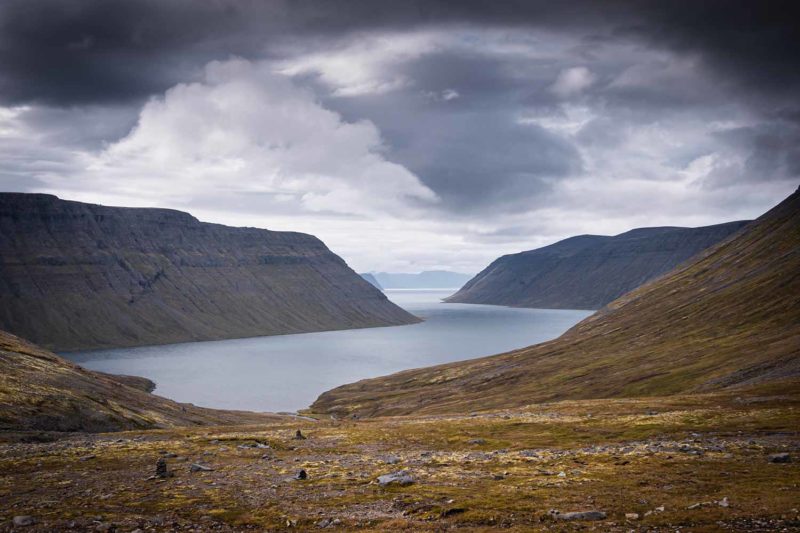
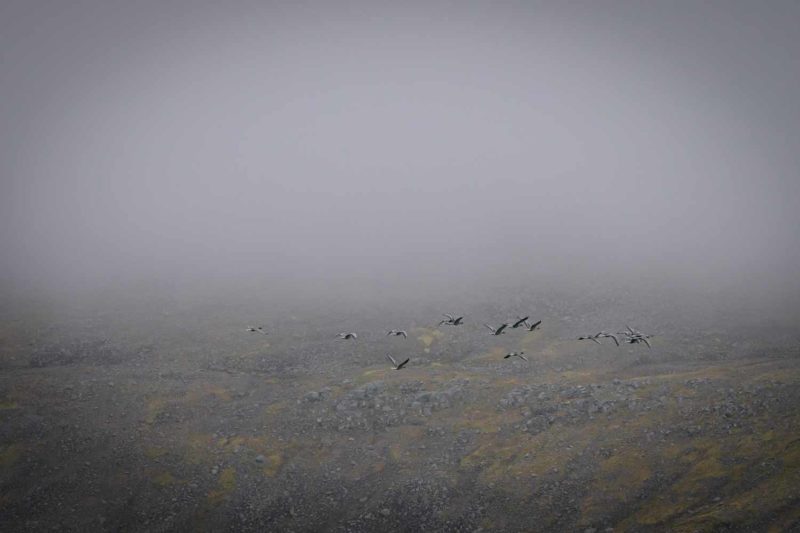
Veidileysufjördur.
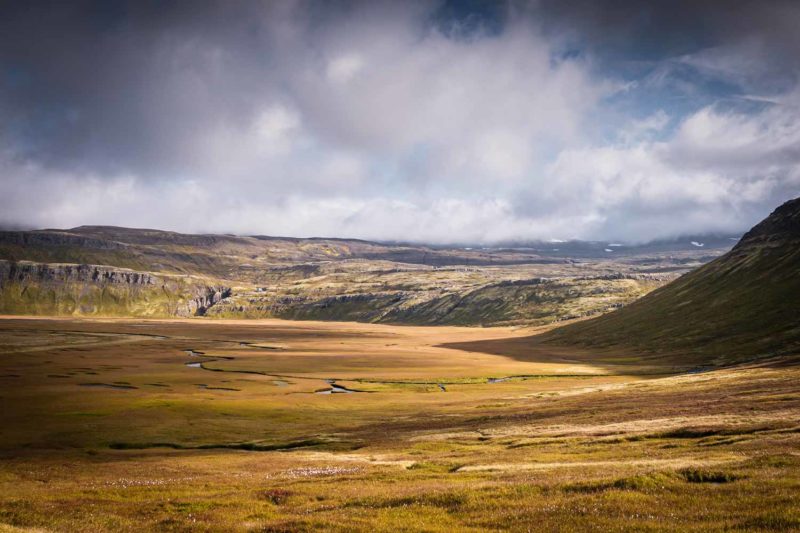
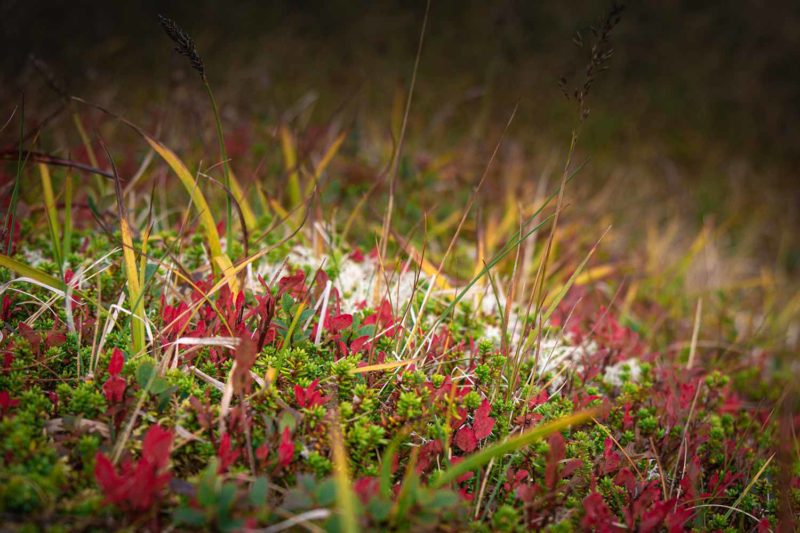
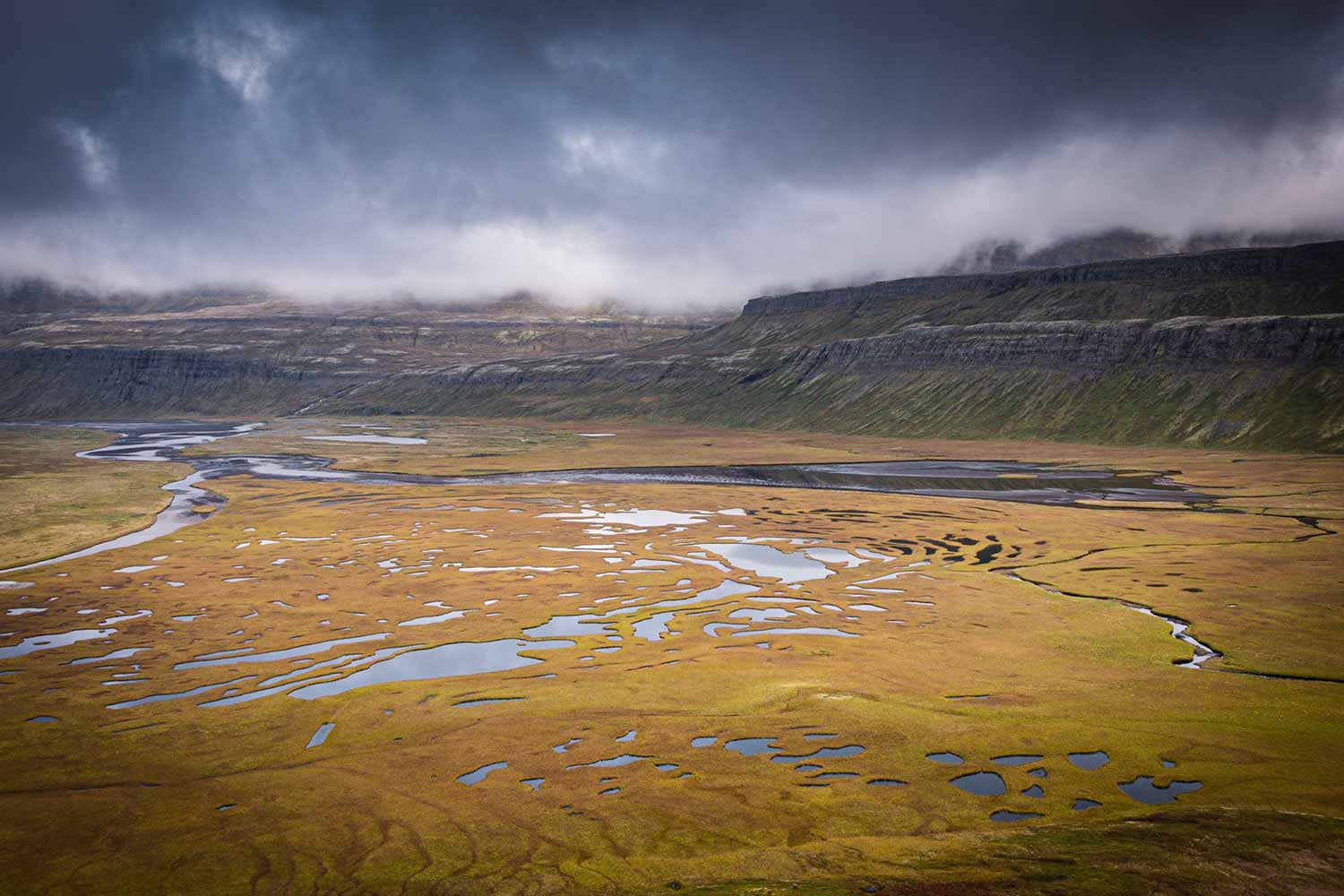
Hornvik bay.
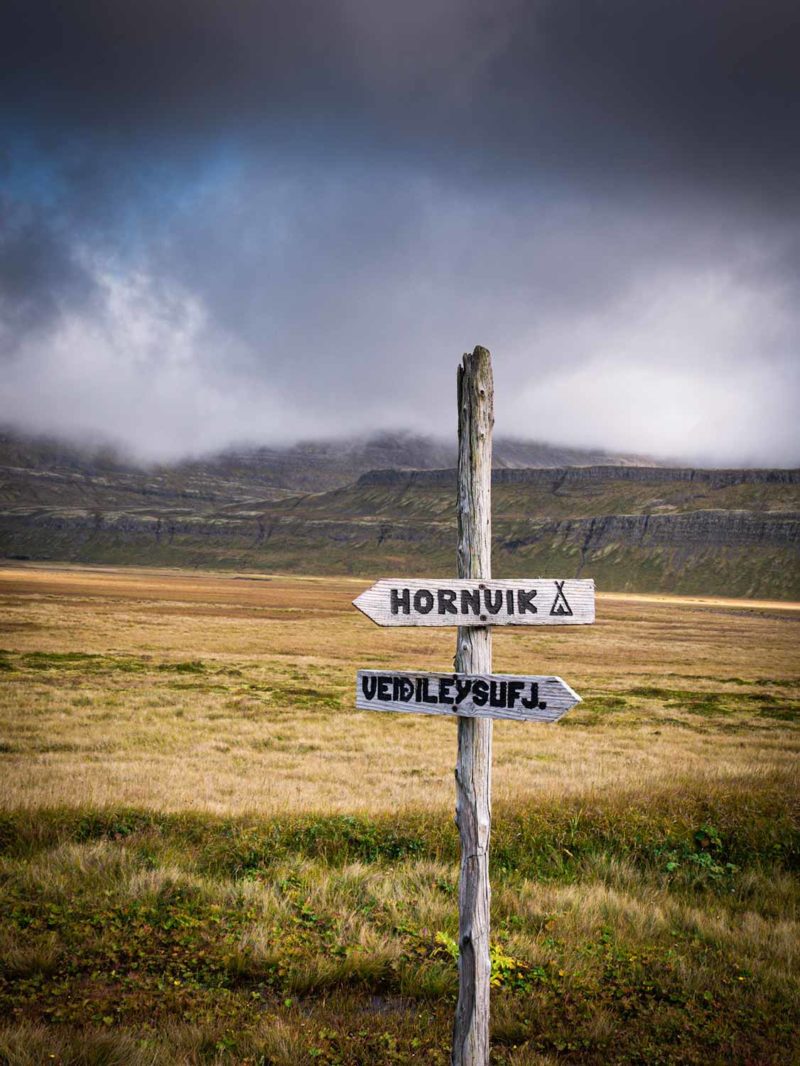
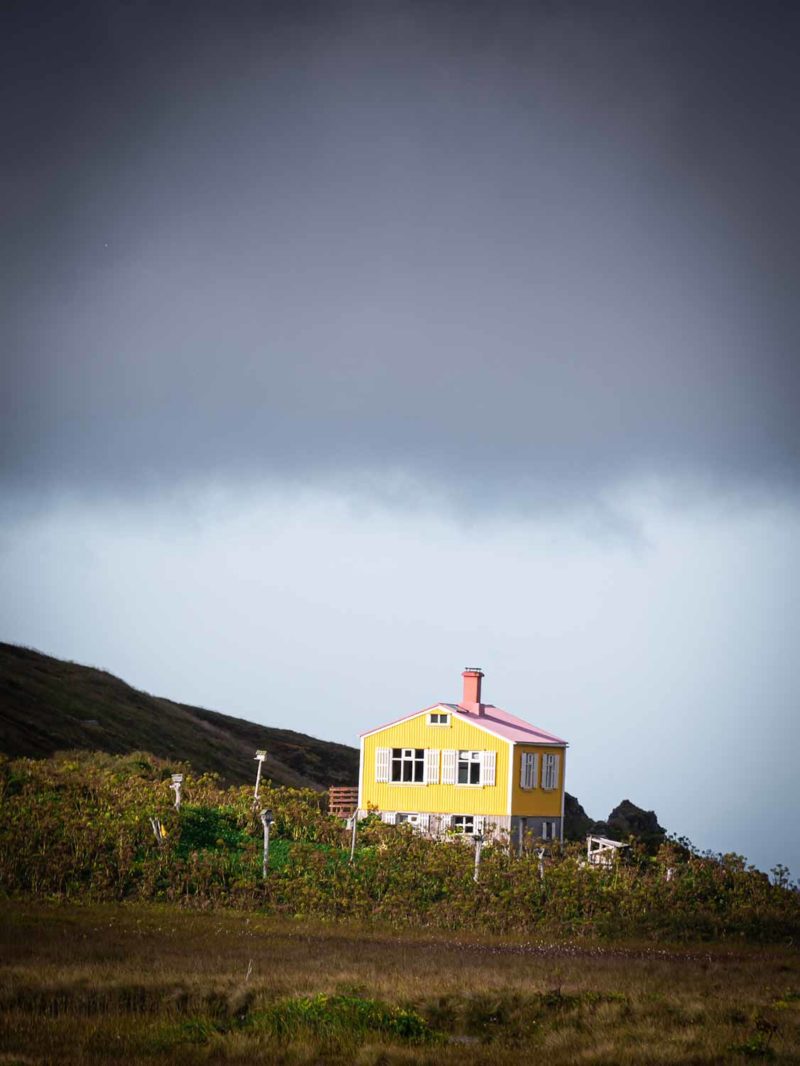
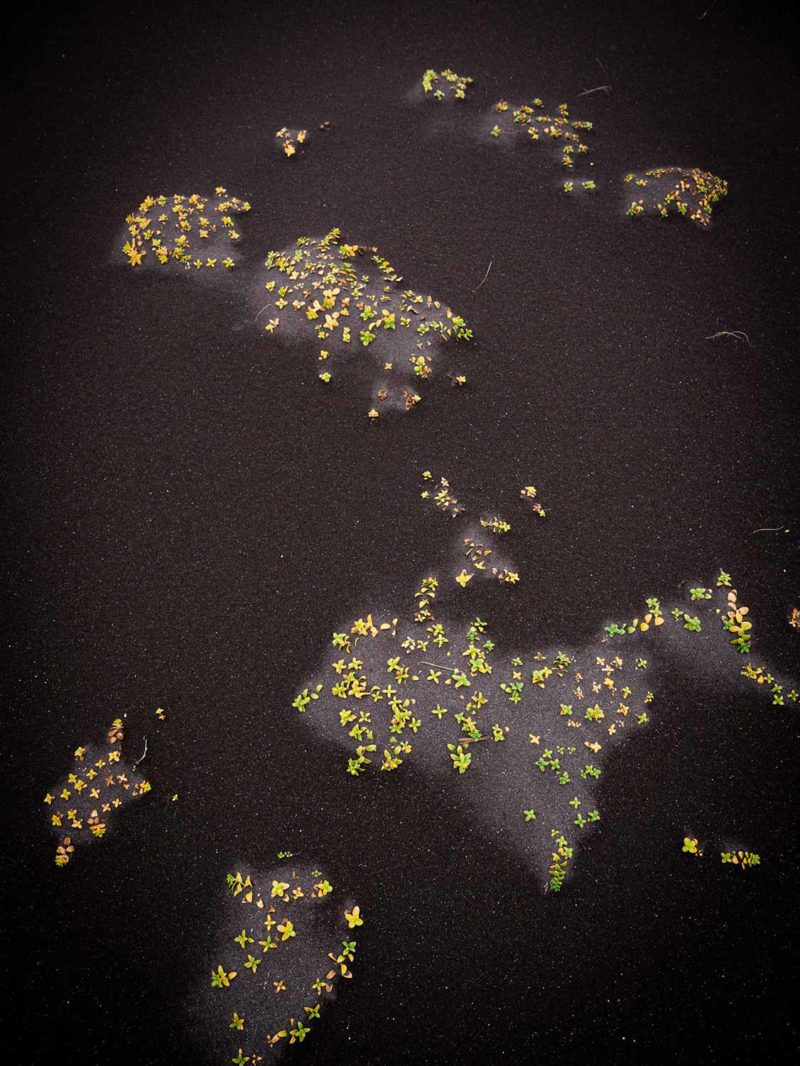
A small empty cottage and drawings on the black sand.
I finally find the trail again. In the fog I went far more to the east than needed. A small yellow house appears in the light. There is nobody. An old farmhouse transformed into a summer residence? Followed by the bivouac area, already in the shadows, at the edge of the sea. On the other side, the cliffs of Hornbjarg are almost cleared. A German gentleman camping also, informs me that this is his sixth day on Hornstrandir. He made the big loop. Tomorrow he will walk the path I followed (and lost) today. A black fur ball appears. An artic fox! He weasels around the camp, taking care of his own business. He is used to the leftovers abandoned by campers. He seems very small. Is he a young adult? Later on the beach I see a second one running at full speed, a big white spot in the mouth. A bird? A fish? In the evening light that falls under a milder sky, I realize that I am finally on Hornstrandir, one of the places I really wanted to go to during my stay in Iceland. This is my last Icelandic hike.
The next day I leave my tent at the bivouac area to go for a walk on the cliffs of Hornbjarg. It is the most eastern place in Hornstrandir and the most northerly in the Westfjords. Made of nicks and points rising up to 534m in height. The place is full of birds and was once a popular place for the few inhabitants of the peninsula. They hunted the birds and gathered the eggs. But the Hornbjarg cliffs are dangerous and many people have lost their lives. Today, Hornstrandir is no longer inhabited, subject to harsh climatic conditions. Only a few hikers and locals come to enjoy the wild landscapes and watching bird from the high cliffs.
Clouds obstruct the sky but no fog for now. I cross the great plain along the black sand beach and the small estuary. It is low tide, the river is shallow. A small path runs along the beach and up the hills. No one. A few rays of sun pierce the clouds as I reach the summit of Horn, the tip of the northernmost cliffs of Hornstrandir. It is the emptiness right in front of me. The great infinite sea. The vertical walls plunge into the sea and gulls do acrobatics in the air. They split the wind in a rocket sound that surprises me at times. I follow the cliff, observing without too much adventuring to the edge if a Puffin would maybe hide here. I climb Midfell, a big cliff in the middle of the peninsula. The climb is short but damn steep. Just at the edge of the ocean, 400m higher, I feel a little dizzy. The view of the Hofn Bay stretches magnificent before my eyes. But big black clouds are bringing rain in the distance. I look carefully at the cliffs, no Puffins. They are probably already gone. But lots of seagulls who squeak and vocalize.
From the top of Muli, the third cliff in the middle of Hornbjarg, I go down into the valley below. I lose the trail again. The trace is not well marked and cairns are non-existent. And the paths shown on my map do not seem to exist. But the sea is not far and the coast is easy to follow to return to the bivouac area. It i high tide this time and the waves slam right next to me. The skeleton of a seal lies between two large pebbles. Only the rear fins remain, perhaps too hard to be devoured. I bypass the estuary filled with water far too deep for me to cross like before. The accessible part is further inland in the valley. The fog is swallowing the top of the mountains. Groups of seagulls fly by the hundred at my approach. I cross in the black sand that sinks under my bare feet. Birds and fox prints mingle with human footprints. A funny feeling is taking possession of my mind. I feel a little tired and slightly disappointed. Without knowing exactly why. Maybe it is the bad weather. Maybe it is today’s hike, beautiful, but not as much as I imagined. Perhaps it is the places so beautiful but so austere that are bringing me down. Still, the feeling that I felt four days ago is back. I want to go home. Go back to a more hospitable European landscapes. After almost six weeks in Iceland, I feel homesick.
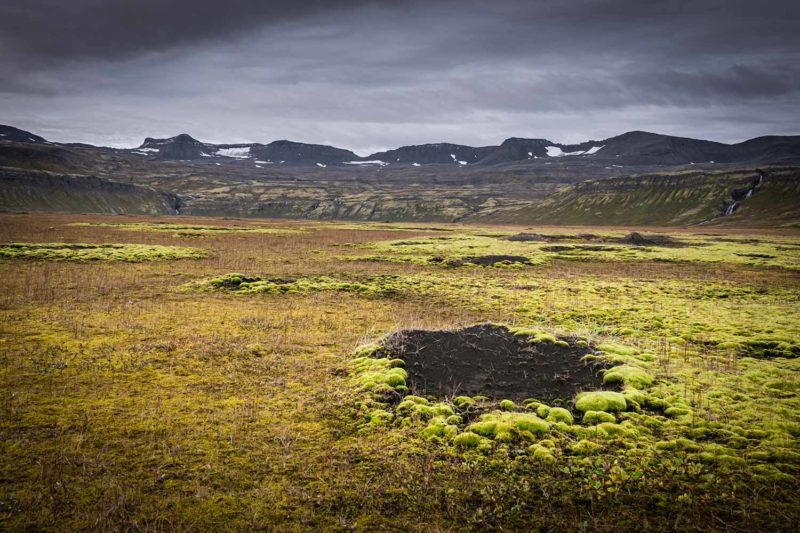
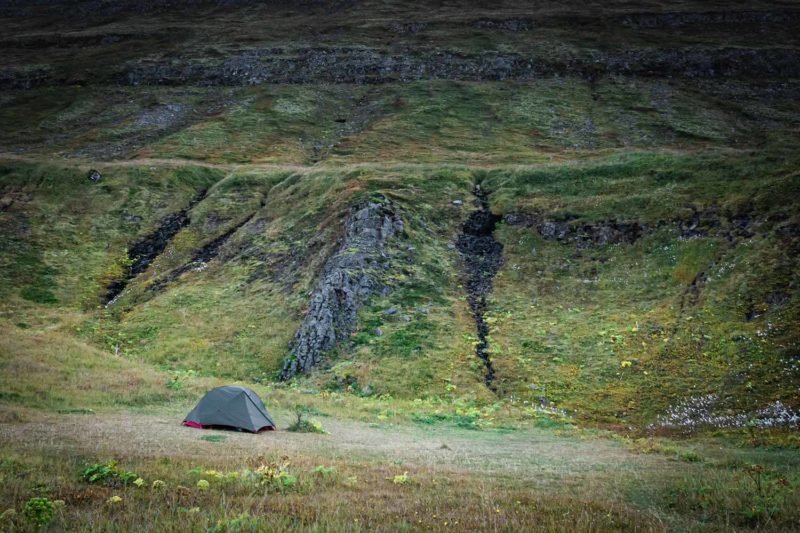
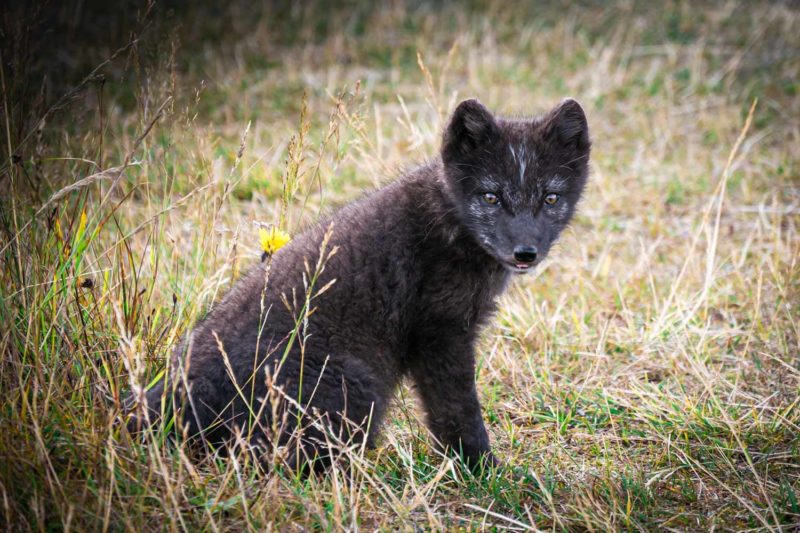
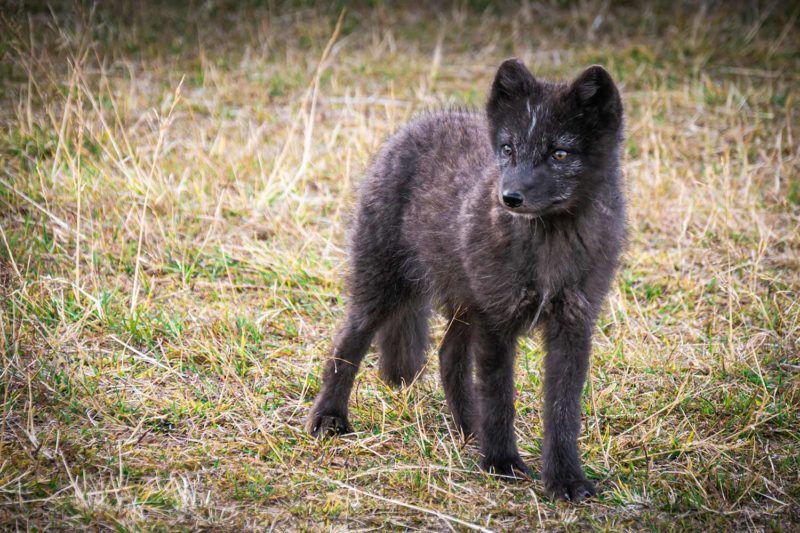
A young artic fox.
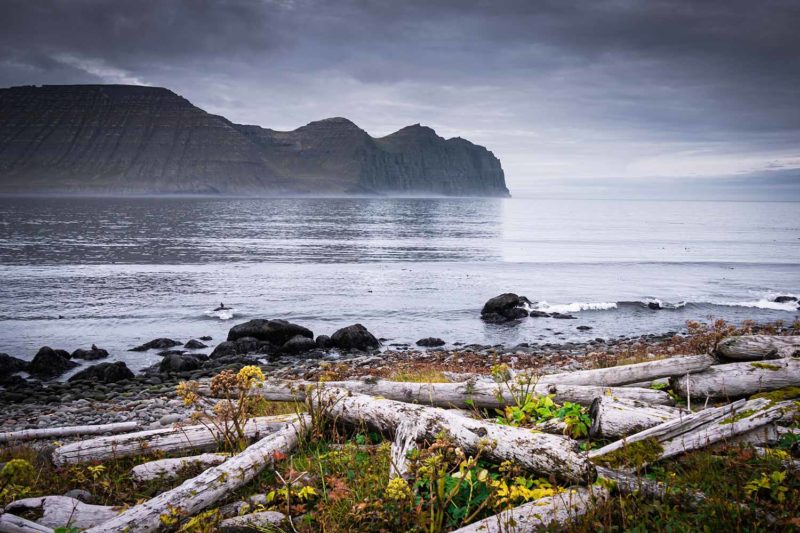
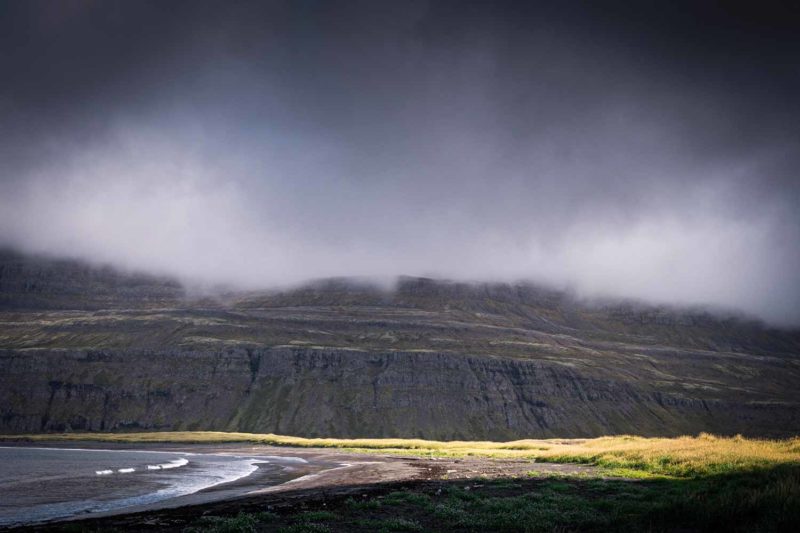
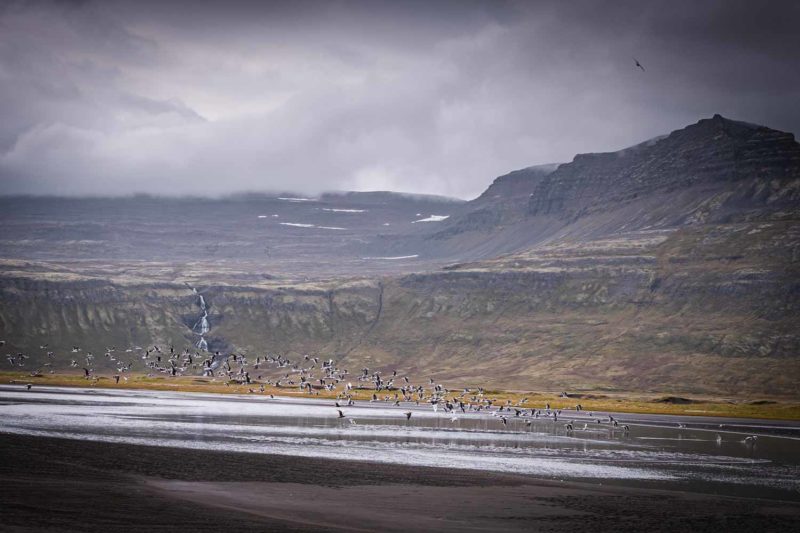
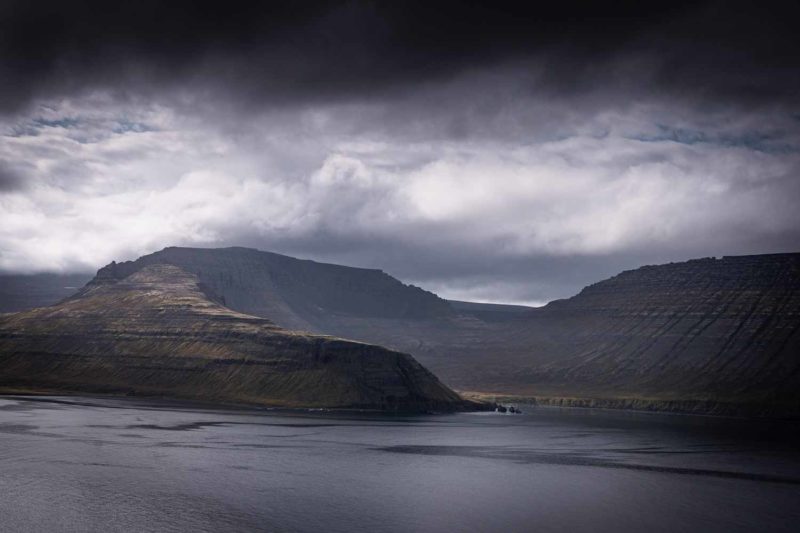
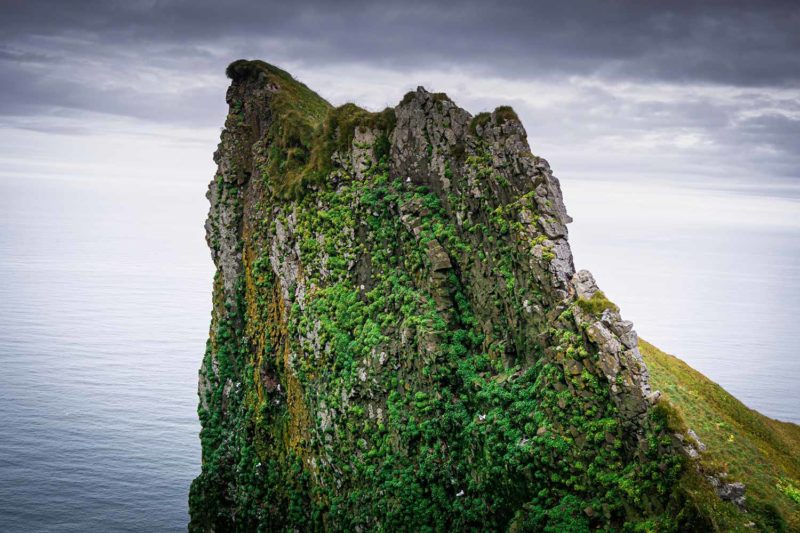
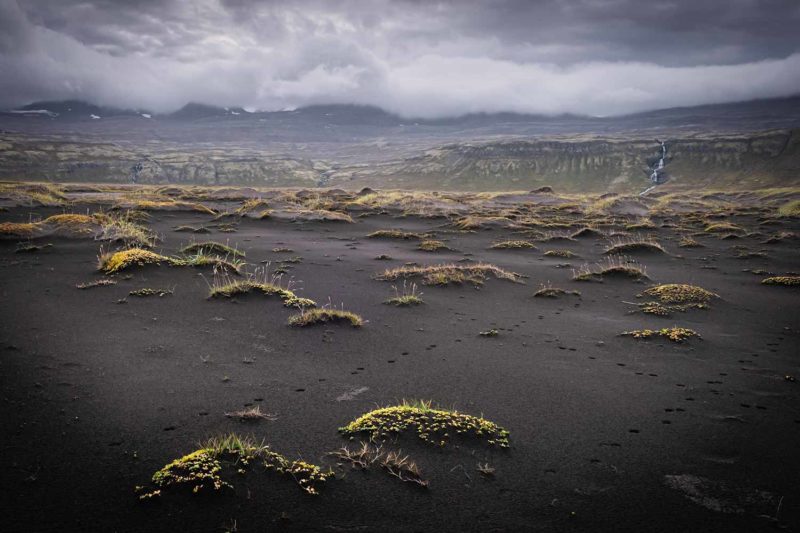
Horn Cliff on the left and Hornvik Bay on the right.
The guides of the Borea Aventure company have almost finished dismantling the large tent that served as a summer refuge. They are putting away the last things lying around. Five silhouettes appear. A guide and tourists on an organized day tour. They leave with the small boat that picks them up around 6pm. The guides bring with them their latest belongings. They cross the bay by zodiac to reach on the other side a house by the water before which I passed earlier in the day. They will sleep there, probably. Me, I take the opportunity to repack my bag and my tent and take up residence in the little red box, the emergency shelter. It is suppose to rain a lot this night and tomorrow morning and I prefer to be safe. And then with the guides gone, I find myself alone in the large wild bay slowly filled by fog. I feel a little scared and the worry of the next day, probably difficult because of bad weather, occupies my thoughts. In the twilight of the evening that arrives, I see from my refuge, two little foxes having fun on the beach. Black coat on black sand. Almost invisible. They bicker, run and jump on each other. They look so carefree.
The wind vibrates the cables that hold the emergency shelter in place. The storm has arrived and the rain has been falling without interruption since midnight. I have trouble sleeping. Fortunately I am in the shelter. The light slowly appears at the slow pace of hours passing. The bay is in the fog and places filled with water. I wrapped myself in welcomed blankets left in the shelter. I have a headache, worried about what will follow. Will the rain stop as planned at midday? Will I be able to do ten kilometers to reach the next refuge on a waterlogged path? A difficult passage is just two kilometers away from the refuge where I am. A passage along the cliffs, very exposed and impressive. Will it be passable this afternoon? And if I have to stay here today, will I be able to make the remaining 25-30 km tomorrow in one day to reach Hesteyri, where the ferry will pick me up Sunday evening? And if I can not do it, how am I going to contact the boat to ask for help? So many questions in my head. I want to go home. To leave this threatening world. There is nothing to do here, there is no reception. And the battery of my tablet is almost empty. I can not continue writing. I have nothing to do except wait and listen to the falling rain and the sound of the waves coming and going. And think. Think about the aftermath, the after Iceland, the future. My mind is also in the fog.
A strange sniff coming from the sea surprises me as I step outside to assess the weather. A mustache head emerges from the water a few meters from the shore. A spotted seal lounges in front of me. He is stretching his nose towards the sky. The rain has finally stopped. And the wind gusts so violent are slowly decreasing. Some rays of sun even appear. It is warmer outside than inside my box. I have lunch, ready to go. But the rain resumes again. So I wait, watching the hours passing by. Around 3pm, it is still raining but I can not wait anymore, I want to leave. Finally, to know if the path is going to be passable or not. So I go under less and less strong droplets, determined to reach the next refuge even if I have to arrive at night. Thirty minutes later, I arrived at a rock by the sea to climb with ropes. A little fox pokes his nose as I begin the climb and pass me quietly without paying attention. I cross the rock easily and continue along the next small flank path. Here I am already arrived at Rekavik, the next small valley. Was that the difficult passage? The 300 meters exposed by the sea? Where were they? The information given by the German gentleman seems a little wrong. I got so worried because of it. I call myself an idiot. And tell me that my father is definitely right: nowadays we often strangle ourself with an excess of caution.
A foggy white mass appears swallowing the pass while I arrived. The fog also crosses the mountains through passes. Fortunately it faints and disappears evaporating in the air. On the other side, I cross the pretty stony valley of Ardalur. The mist comes and goes at the rhythm of the squalls. I follow big cairns well visible. Wild swans and greylag geese fly at my approach. I observe their flight in line or in triangle. I would like to be a bird. And then suddenly the sun appears again, this time for a long time. As usual places seem instantly different, less dangerous. From the top of Skalarkambur pass, I can see Hloduvik Bay below. A farm and a little red box in the distance. At the top of this impressive pass, looking at the big cliffs around me, I tell myself that I am probably one of the last people walking for several days on Hornstrandir. After my visit, places will soon be covered with snow and find complete calm again.
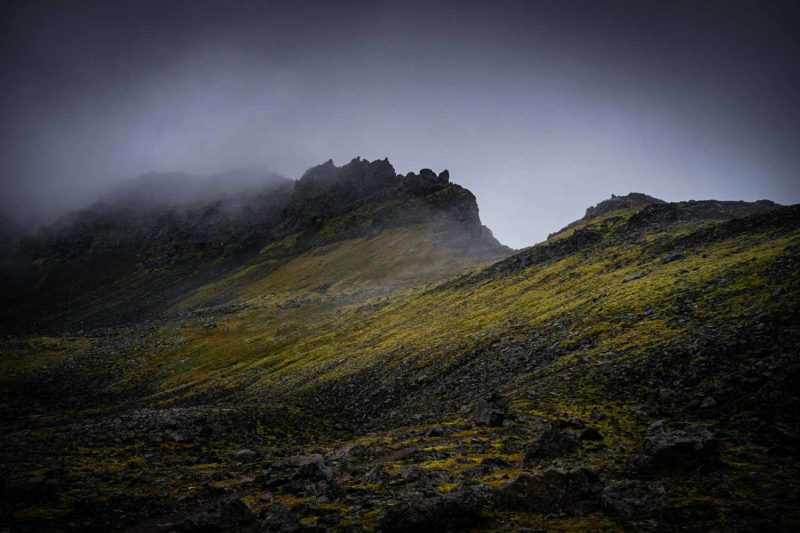
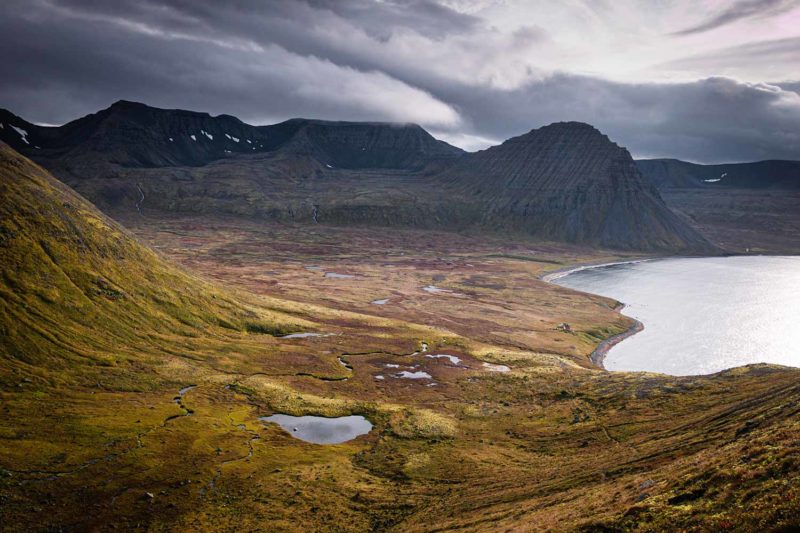
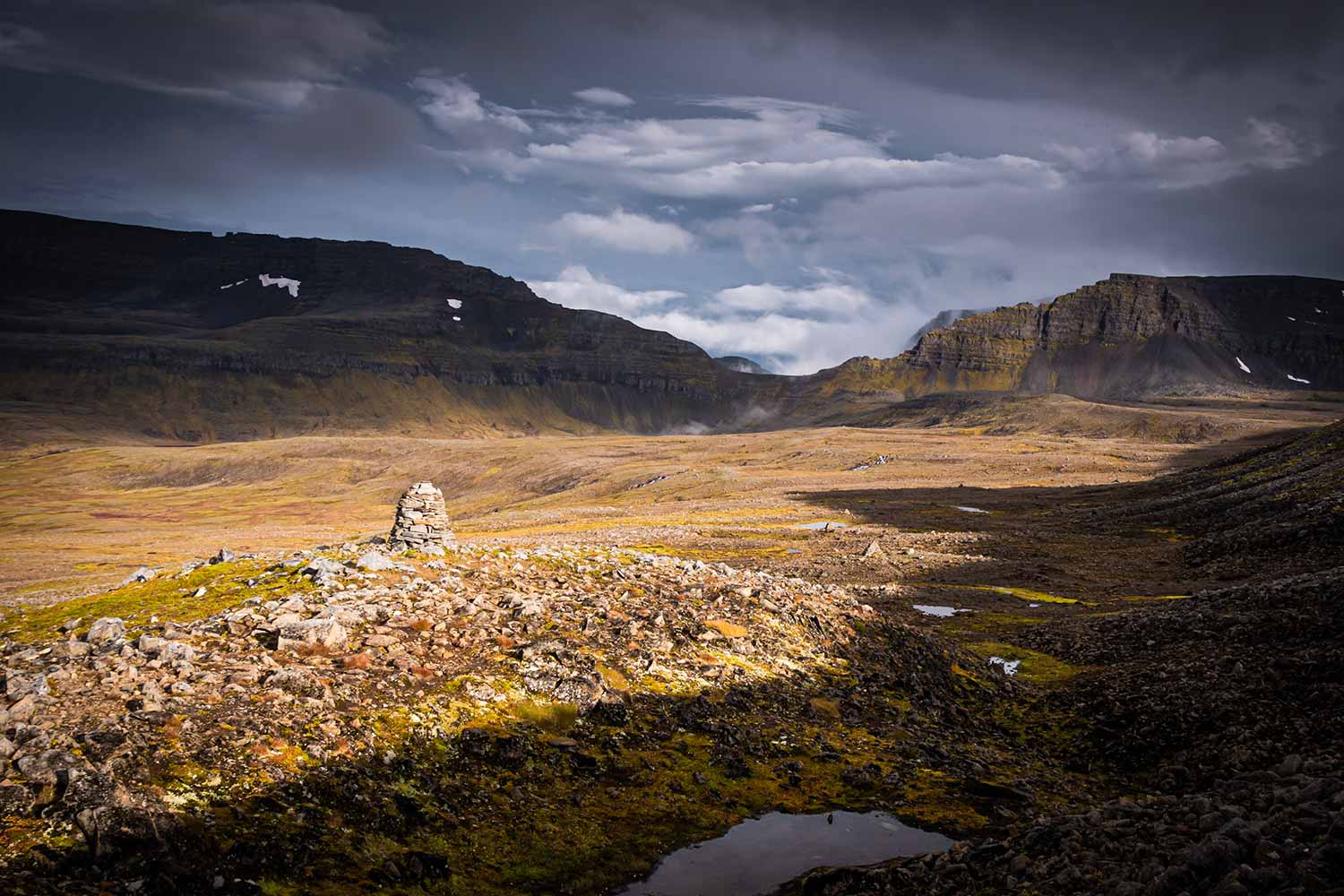
Ardalur valley.
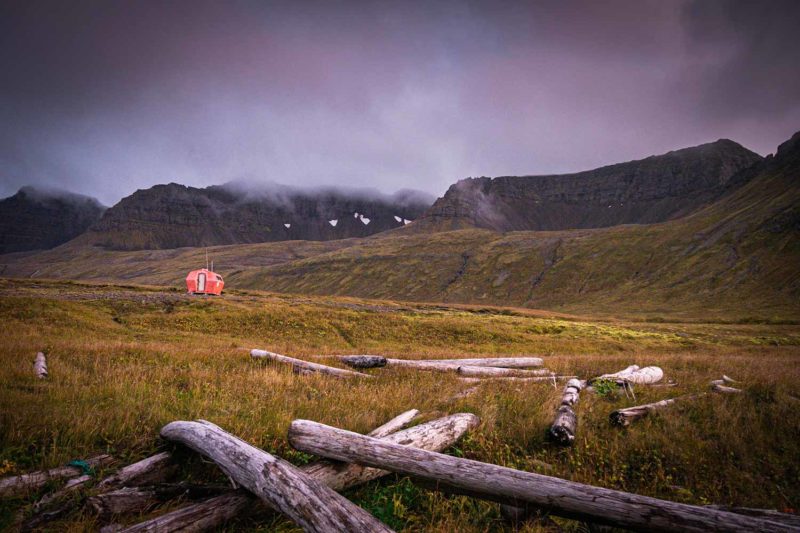
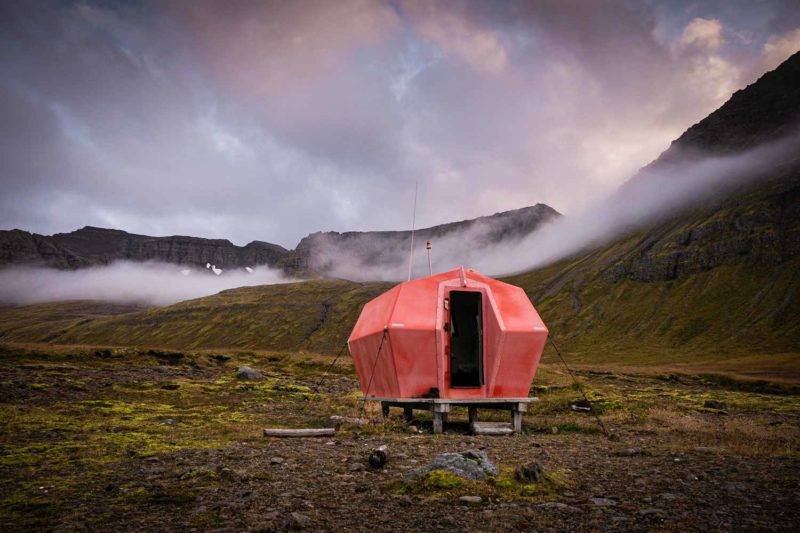
An emergency shelter at Hloduvik.
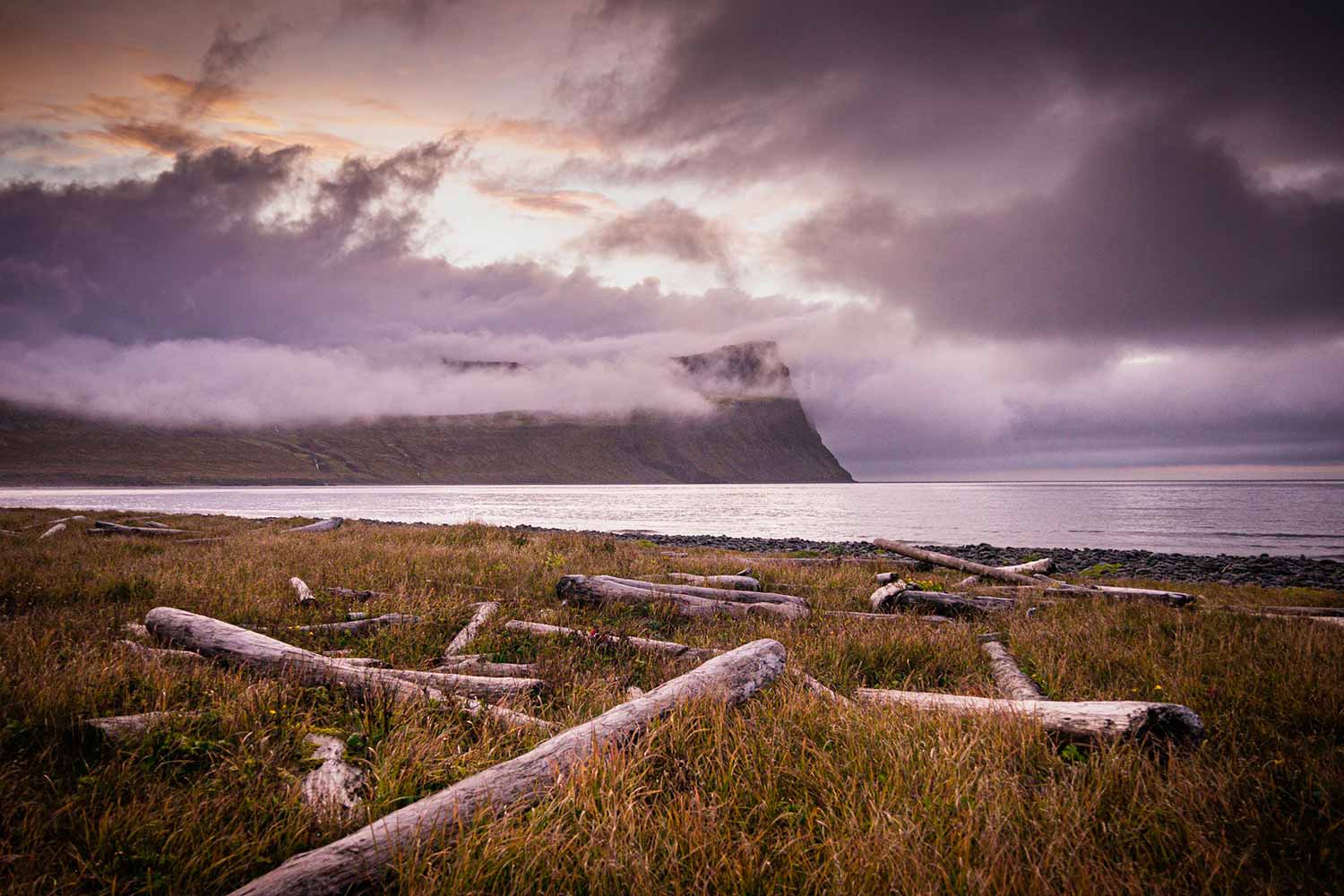
The gorgeous Hloduvik bay in the fog.
The yellow painted farm is made of several small houses. I look out the windows discovering the wooden interior of a modern house. Another summer cottage. I continue along the beach to reach the emergency shelter but a large river blocks the passage. The water is deep and I go up the stream until finding a passable passage. Almost 7pm but I am finally arrived. The refuge is much better than the previous one. Same box but in better condition and without so many things inside. Larubud, of its pretty name. I have reached my destination without incident and the weather is improving. The bay of Hloduvik seems to me much less austere than Hofn. Faded white trunks lie on the beach. I am happy. Happy to be there, alone on Hornstrandir, in the middle of these impressive landscapes. Everywhere the cliffs are cut out with deep holes. That is all that remain of the gigantic glaciers that covered Hornstrandir years ago. I listen to the sound of the waves and contemplate the horizon before me, losing myself in the contemplation of a sunset half visible through the mist that gently envelops the scene in the falling night. I feel a little guilty, strangely, of finding the places so beautiful, so idyllic while I spent a long night and morning wanting to leave from here as soon as possible, frightened by a threatening landscape. My little emergency shelter, my red box, looks like an alien ship. Or a space station. There, sitting in the bay, contemplating this landscape so different, I have the impression of finding myself on another world.
The last day goes like in a dream. I walk slowly along the path that climbs to the Kjaransvlkurskard pass. The Hesteyrarfjördur fjord appears on the other side. A long blue tongue that sinks between the cliffs. With the exception of the sound of groups of swans and ducks, it is complete calm. Absolute peace. I walk along the long rocky plateau overlooking the fjord. Kilometers of moraines cover the ground. Large cairns stretch in single file in the landscape. Small turrets of stones. Some are true works of art. How old are they? The sun appears and disappears between the big black clouds. I walk down the kilometers without realizing it. And already Hesteyri appears in the landscape. The remains of an old village. The only village in Hornstrandir. Today the ten or so remaining households are only used as summer cottages. I reach the village in the middle of the afternoon. Sheets hang next to a house. I thought the village was empty. I pass the house and almost jump at the sight of a face that beckoned me through the window. A few meters away, a man comes back from the beach in his swimming shorts. But what are they doing here? Are they visitors or locals? Are they Icelandic? I join the small pier where the boat that dropped me four days ago must pick me up at 6pm. Three hours to wait. It is raining slightly. A small open shed where are stored a small boat and fishing rods will be my refuge in the meantime. The hours pass slowly. A small ball of feathers titillates above me exploring the place. My clothes and shoes smell like wet dogs. I am happy to go back, to find Isafjördur again. This last Icelandic hike was a beautiful experience, harder and wilder than I imagined. With a mix of emotions and beautiful landscapes. The boat finally arrives in the distance but seems to be heading for the next fjord. What is going on? Will it leave me here? Fortunately the people in the house who turns out to be a little cafe still open, contact the captain by radio. A confusion on the list of people to get back almost made me spend another unforeseen night on Hornstrandir. The boat recovers other hikers and tourists with guides. The return is a little long, tossed by the waves. But in the middle of Isafjardardjup strait a surprise awaits me. Two whales bask on the surface of the water! Two humpback whales, of which I can only see the upper fin and the large tail that comes out of the water several times. We are close to them and they let us watch them for a few minutes before diving into the depths and the calm of the ocean. A moment so stealthy, so ephemeral, so perfect. A wonderful gift to conclude my discovery of Iceland on foot.
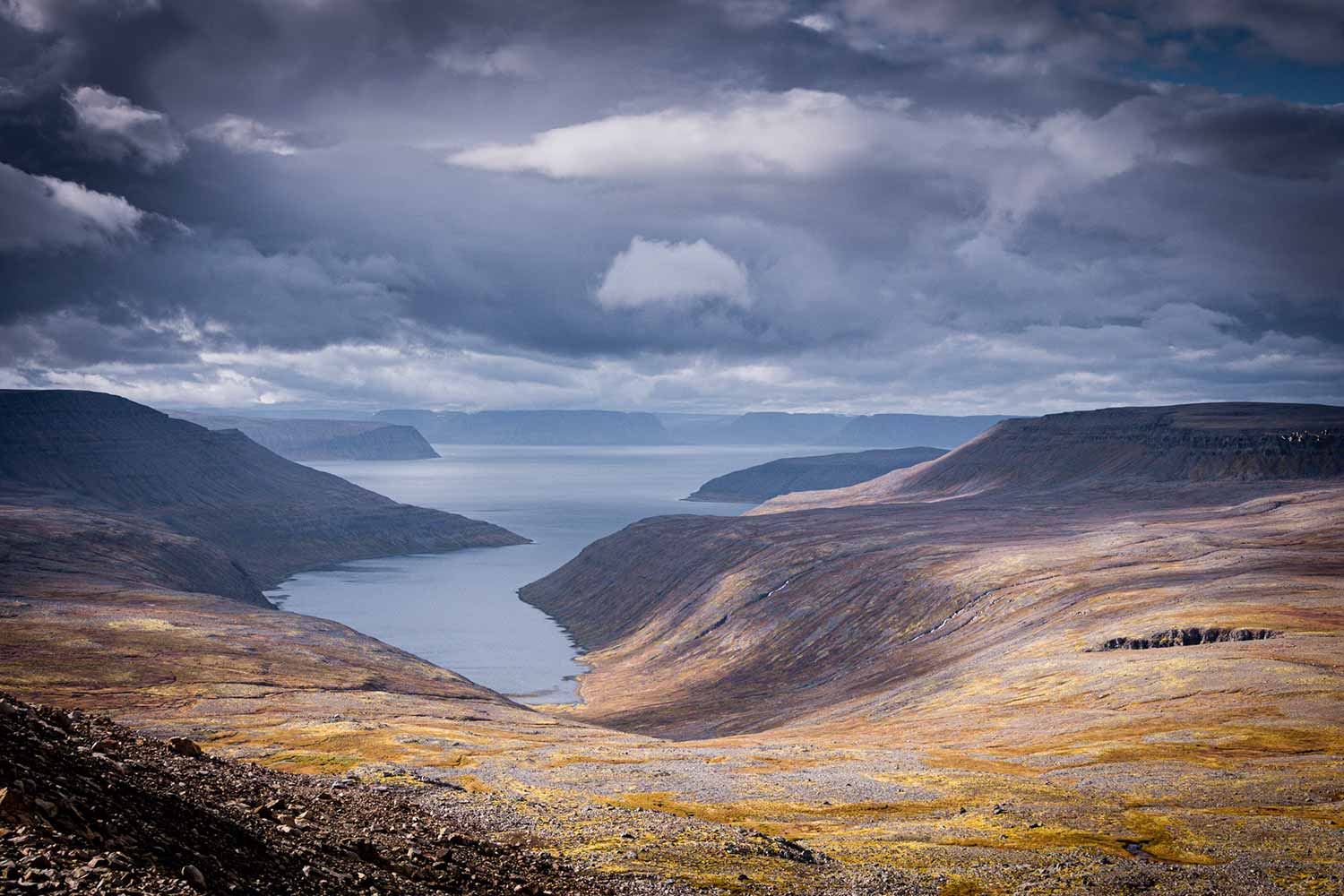
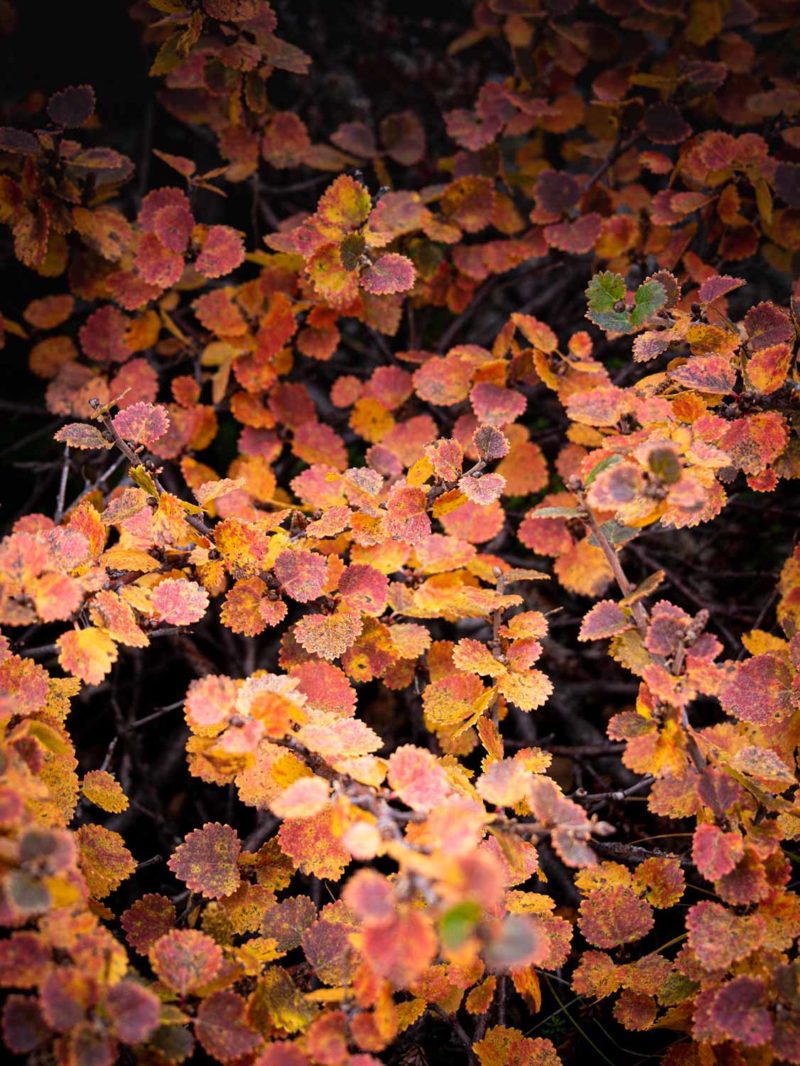
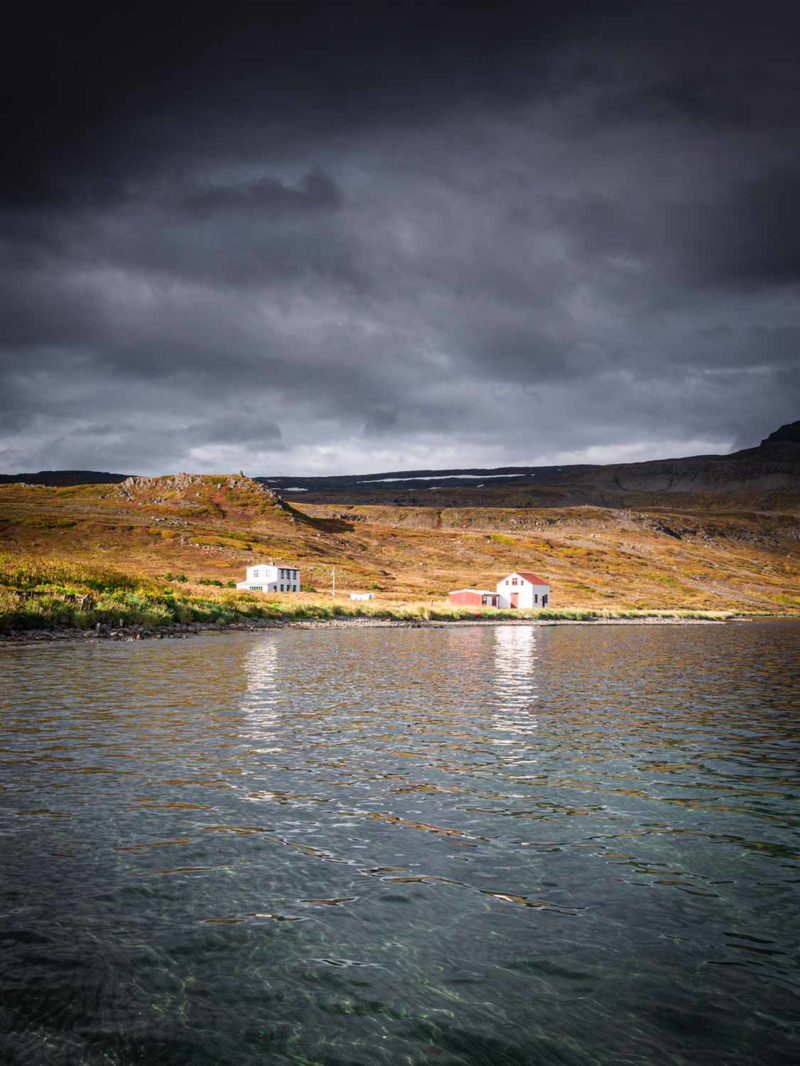
Hesteyrarfjördur.

Such a lovely description of your solitary tour. I myself just returned from a similar few days there in Hornstrandir. You capture the sentiment perfectly. Thank you.